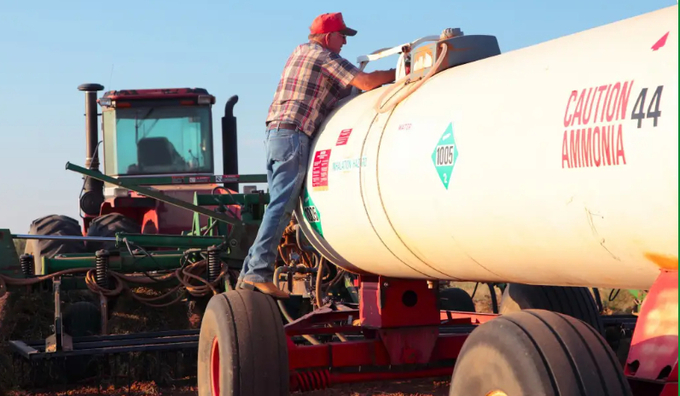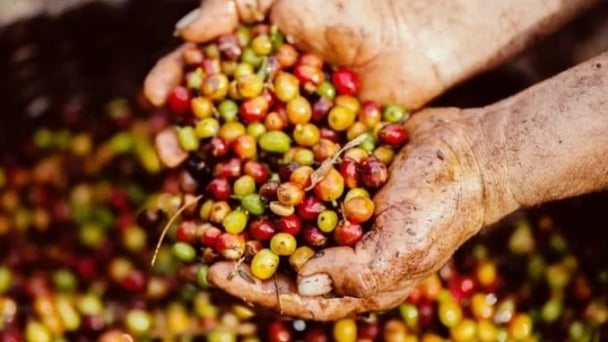June 18, 2025 | 07:45 GMT +7
June 18, 2025 | 07:45 GMT +7
Hotline: 0913.378.918
June 18, 2025 | 07:45 GMT +7
Hotline: 0913.378.918

The company starts by splitting water into hydrogen and oxygen molecules and separating nitrogen from the air. Then, it pumps hydrogen and nitrogen into a reaction chamber, where lithium helps attach the right number of hydrogens to each nitrogen atom. Ammonia emerges from the other side.
When Suzanne Zamany Andersen arranged her trip to greenhouse grower Koppert Cress in the Netherlands, she thought she would just be pitching her startup’s device, which turns electricity and air into ammonia, a widely used fertilizer.
Not only did the company agree to test the ammonia production system made by her company — Denmark-based NitroVolt — it also referred her to its relatively new investment arm, Division Q, which ended up making an investment.
Once installed, NitroVolt’s device will produce ammonia that Koppert Cress will use to grow its crops (a range of different cress varieties), and it’ll use heat generated by the device to warm its greenhouses. “This is a perfect fit,” Andersen said the company told her.
The majority of the world’s ammonia is produced using the 115-year-old Haber-Bosch process, which is heavily reliant on natural gas. For growers like Koppert Cress, which wants to eliminate its carbon emissions by 2026, fertilizer represents a challenging source of pollution to zero out.
NitroVolt is one of a fresh crop of startups working to find alternatives to Haber-Bosch. The company starts by splitting water into hydrogen and oxygen molecules and separating nitrogen from the air. Then, it pumps hydrogen and nitrogen into a reaction chamber, where lithium helps attach the right number of hydrogens to each nitrogen atom. Ammonia emerges from the other side.
Ammonia is one of two nitrogen-based fertilizers that are broadly used throughout agriculture. “Certain crops really like ammonia, certain crops really like nitrates,” Andersen told TechCrunch.
The first farmer likely to pilot NitroVolt’s system is a rapeseed farmer in Denmark. “He swears by ammonia,” Andersen said.
But Denmark doesn’t currently have any ammonia production, so the farmer’s brother drives to Poland several times per year to procure it. “When he saw that we could do on-farm production, he was like, when can you sell me this unit?” Andersen said.
Denmark isn’t the only place where ammonia is hard to come by. Much of Africa, South America, and even parts of Canada are ammonia deserts. “There’s places where the logistics and distribution costs of centrally produced fertilizer is just really high,” Andersen said. “These markets, they’re not served by the current incumbent technology. So this is where we can essentially step in.”
NitroVolt’s pilot unit will produce about 5 kilograms of ammonia per day, but the startup has plans to incrementally boost production to 150 kilograms per day, enough to supply a typical farm in Denmark and the U.S. The whole operation would fit inside a standard 20-foot shipping container.
The startup raised a €2.75 million seed round led by BackingMinds and EIFO, the Danish sovereign wealth fund, to help build the pilot and hire staff to make it happen. Breakthrough Energy Fellows, Division Q, EQT Foundation, and Satgana participated, and BackingMinds underwrote a €750,000 convertible loan.
Andersen said that, if farmers have renewable energy on site, NitroVolt’s system can produce ammonia at a cost comparable to what they pay today. As more farmers adopt renewable energy, that could help tip the balance in favor of electrically-produced ammonia.
“We first started with farmers three years ago, they really didn’t have a lot of renewable energy on site,” she said. “Over the past three years, more than half the farmers we talked to either have solar on site, despite the fact that it’s basically never sunny in Denmark, or they have bought big wind turbines. It’s really a shift that’s happening.”
(Techcrunch)
![Turning wind and rain into action: [7] Early disaster warnings help marine farmers minimize losses](https://t.ex-cdn.com/nongnghiepmoitruong.vn/608w/files/news/2025/06/17/z6704423696987_15fd32ffc26d590d204d520c9dac6786-nongnghiep-142942.jpg)
(VAN) In recent years, thanks to early disaster warnings and forecasting, marine farmers in Khanh Hoa province have been able to reduce risks and losses, thereby improving production efficiency.
![Turning wind and rain into action: [6] ‘Four on-the-spot’ disaster management software](https://t.ex-cdn.com/nongnghiepmoitruong.vn/608w/files/news/2025/06/17/e5a48259d6a262fc3bb3-nongnghiep-183800.jpg)
(VAN) By simply activating the scenario on the disaster management software, the relevant authorities immediately know how many households need to be evacuated, where to evacuate them to, and by what means of transportation…
![Turning wind and rain into action: [5] Hue applies modern technology in disaster forecasting](https://t.ex-cdn.com/nongnghiepmoitruong.vn/608w/files/news/2025/06/17/z6704423696987_15fd32ffc26d590d204d520c9dac6786-nongnghiep-093938.jpg)
(VAN) In Hue city, modern technology has recently been applied in meteorological and hydrological forecasting and warning, helping to reduce the damage caused by natural disasters.

(VAN) A cutting-edge farming technique being implemented on an experimental ranch in Arizona's Sonoran Desert has already saved a billion gallons of water over five years, according to Civil Eats.

(VAN) Poultry and pig production and the environment can be boosted through enhanced water technology, according to new research.

(VAN) Coffee prices on June 16, 2025 are unchanged. In Vietnam, local trading prices are holding steady, ranging around VND 112,000 – VND 112,500/kg.
![Turning wind and rain into action: [4] Bringing climate bulletins to remote and isolated areas](https://t.ex-cdn.com/nongnghiepmoitruong.vn/608w/files/linhnhp/2025/06/14/1152-z6704423696987_15fd32ffc26d590d204d520c9dac6786-nongnghiep-151141.jpg)
(VAN) The Vietnam Agriculture and Nature Newspaper interviewed Mr. Vu Thai Truong, Acting Head of Climate Change and Environment at UNDP Vietnam, to gain deeper insight into how climate bulletins are delivered to farmers.